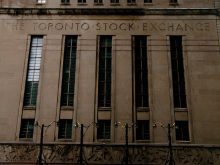There has been a lot of negativity directed towards the mutual fund and financial advisory industries around performance and fees, partly because of the emergence of Exchange Traded Funds (ETFs) with lower fees. Advisors, however, rely on mutual fund fees. My bias is towards taking control with direct stock ownership. This virtually eliminates fees and, if done correctly, can enhance your portfolio’s performance. It isn’t nearly as difficult as it’s made out to be. However, this isn’t the solution for everyone.
A friend contacted me about a second opinion on his mutual fund portfolio’s performance and fees. I was hesitant as I am not licensed to provide specific advice to an individual. My work is categorized as “advising generally,” which allows writing and speaking to a broad audience. I suggested comparing his performance to ours.
Read Also

Gentle treatments for pain in the neck
Heading toward year-end, people unknowingly tense up against the cold and busyness, causing neck pain that can often be treated with appropriate support and gentle mobility, athletic therapist Kathlyn Hossack says.
My friend’s portfolio performance chart included annual results from 2010 to 2018. Canadian and international balanced funds, which contain both equities and bonds, represented the bulk of the assets. He was widely diversified with slightly more equity than bonds. His compound annual growth rate (CAGR) was 5.4 per cent for the nine years.
To get a broad comparison, I averaged four personal accounts, our two RRSPs and two TFSAs. The CAGR of these accounts calculated to 9.9 per cent. The average of the Canadian and U.S equity (S&P 500) indexes CAGR was 8.5 per cent. One would certainly expect lower performance from a balanced portfolio than an all equity portfolio, as in theory a balanced portfolio gives up performance but protects the downside in weak years. Did this happen?
The comparison was illuminating. I previously believed the theory, but argued that an all-equity portfolio performed so much better long-term, especially at today’s interest rates, that it is best to go all equity. This is dependent on a person’s situation, but most would benefit from all equities while accepting greater volatility. However, in my friend’s case the balanced approach didn’t protect the downside.
In three out of the nine years, equity markets were down. In two out of those three down years, our all equity portfolios outperformed his balanced portfolio. On average, over the three down years, my friend was down 3.2 per cent, whereas my wife and I were down just 1.8 per cent. The equity indexes were negative 4.5 per cent. You could argue he did slightly better than the equity indexes but at what cost?
There were six strong equity years during which my friend averaged a gain of 10 per cent, but my wife and I gained 16.4 per cent. The equity markets averaged a gain of 15.7 per cent. Giving up six per cent on good years was a huge cost for the questionable downside protection achieved during the poor years.
Perhaps none of the three down years were severe enough to show the true value of a balanced approach. I went to the fund websites and found 2008 in their long-term charts. This was the worst equity year in over 75 years, so a true acid test. On average the balanced funds were down 24.6 per cent whereas our personal all-equity RRSPs (TFSAs didn’t exist then) were down 22.5 per cent. The markets were off 35.0 per cent. My equity approach has done comparatively well in difficult years, but is not guaranteed.
I used the “Rule of 72” to calculate the effect of the performance differences. In 35 years, my friend would turn $1,000 into $6,400, equity market returns would be $17,600 and my results would be $28,800.
Many will continue to buy mutual funds through financial advisors, which may be best for those who appreciate personal advice and financial discipline. Become educated enough to evaluate performance to help you determine value for fees, which could be two per cent annually. It doesn’t have to be “all or nothing.” You can work with an advisor on some accounts and on your own for others.















